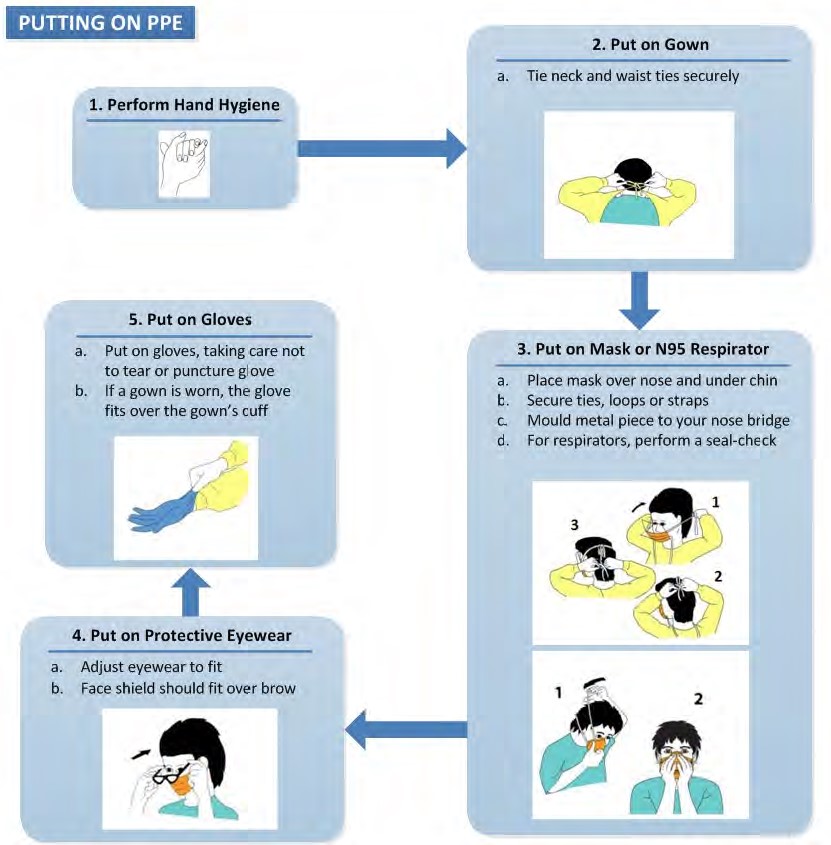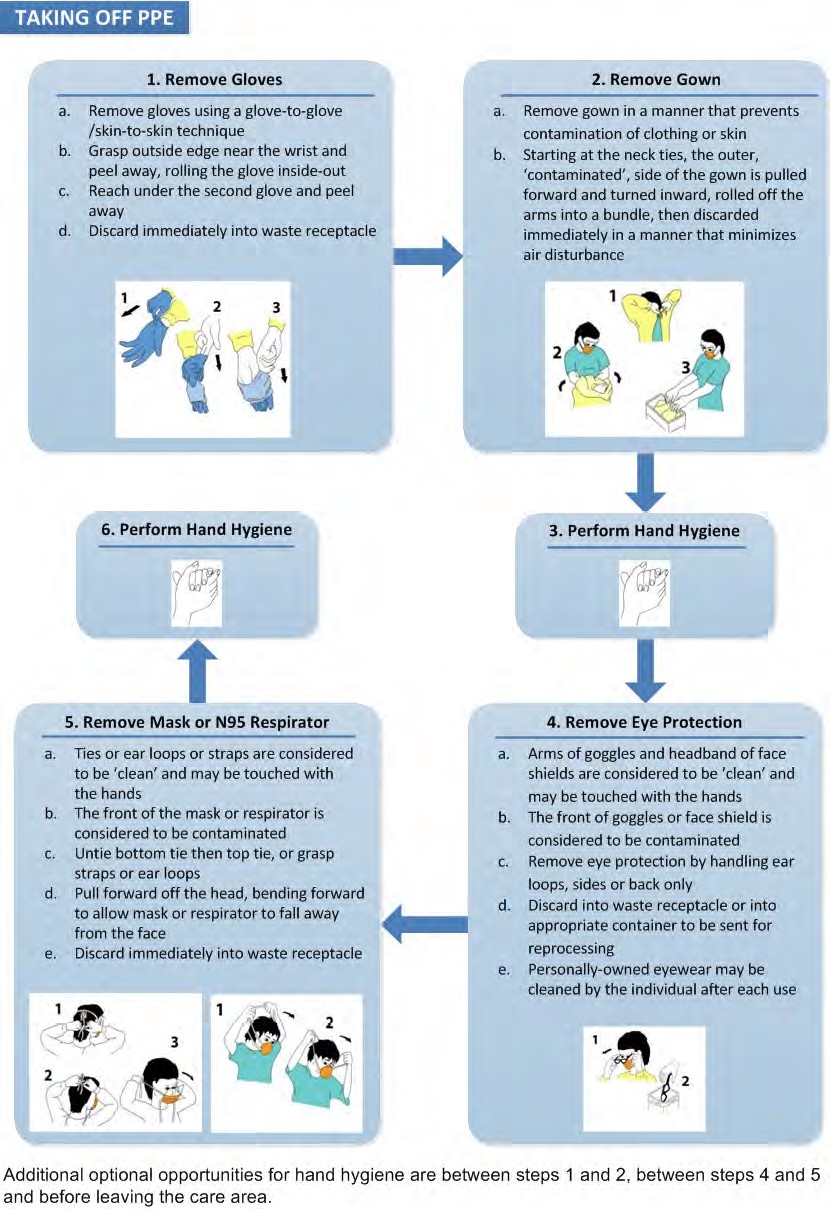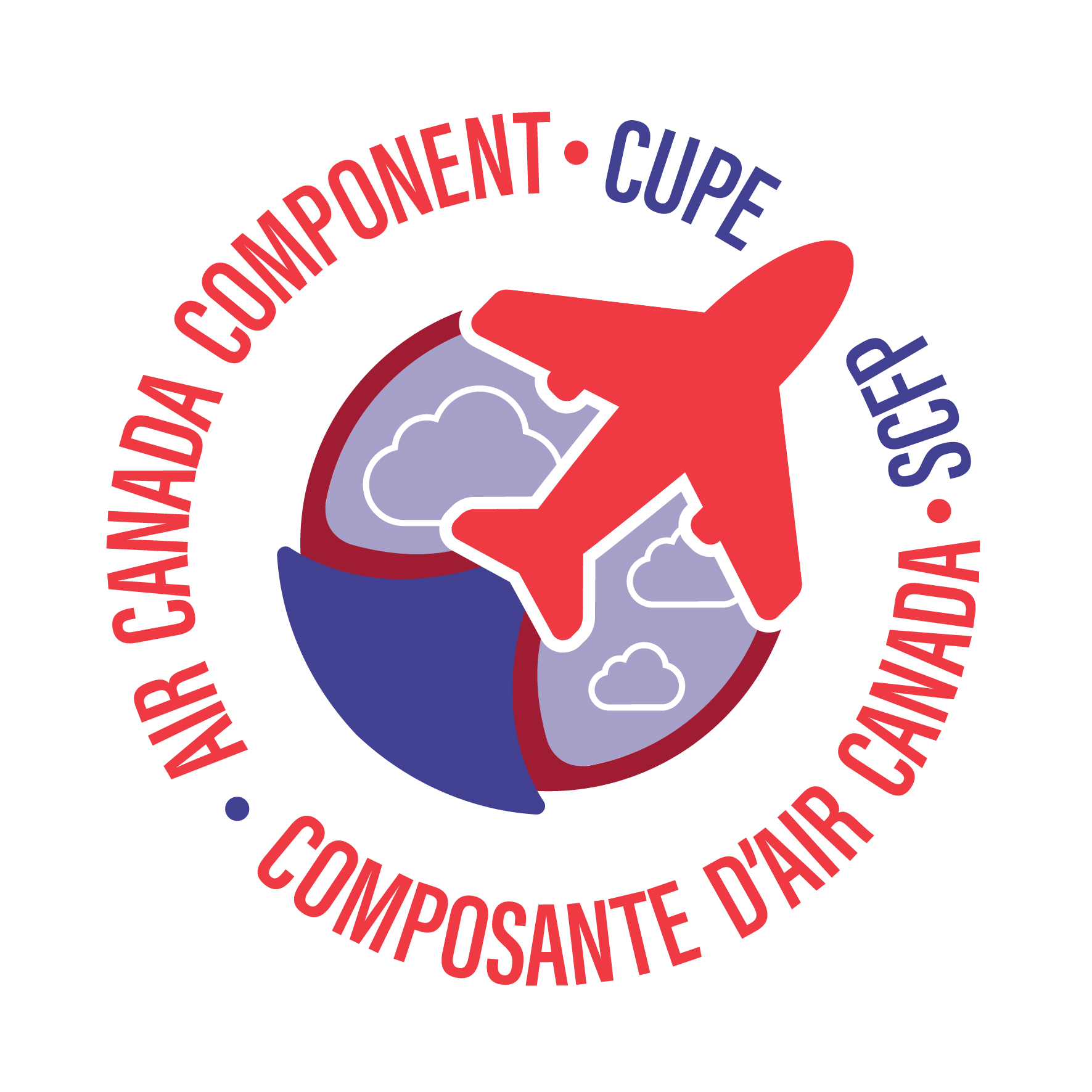Personal protective equipment (PPE) can be invaluable as one of many steps taken to mitigate a hazard in the workplace. However, PPE that isn’t applied, worn, removed and disposed of properly can turn into a hazard in and of itself.
There are many reasons why PPE may be worn wrong, but often it’s because some basic steps aren’t taken. This bulletin aims to provide a reminder of the various PPE available to cabin crew, as well as appropriate care and use for them.
It has three parts:
1. How to don and remove your PPE. These pictorials are large and can be printed out to use onboard as reminders.
2. Detailed explanation and instructions on each type of PPE we currently have.
3. A series of short instructional videos that show proper donning, removal of these types of PPE.
Please know that while the list of products available to our members is impressive, the Union does have ongoing concerns related to specific products, quantities and training. Following recent discussions, the Union is committed to trying to resolve these concerns with management collaboratively. This will require looking at the immediate issues affecting PPE, such as supply chains, but also long-term strategies since COVID-19 is expected to be a part of our lives for some time.
We remain committed to voicing your concerns and suggestions and remind you how important it is to file a Health and Safety complaint e-report for any of these, in addition to informing us as your representatives. Let us know if you require assistance with reporting. The Union can provide step-by-step instructions.
ACAeronet > Safety > Submit a report/SIMS
Or
via the iPad for In-Charges.
Lastly, remember to always consult your FAM and read your company documents including to stay on top of the employer’s procedures and specific instructions pertaining to PPE.
You can reach the Union at any time by emailing contact@accomponent.ca. For issues that can’t wait for regular business hours, email 247@accomponent.ca.
In solidarity,
Your Air Canada Component Occupational Health and Safety Committee
Donning and Doffing PPE
The way you apply and remove your PPE, as well as the order in which you do it, is just as important as the PPE itself when it comes to keep you safe. The following steps should always be followed in order to reduce risk of exposure[1]


There are two types of PPE: Disposable and Re-usable:
Disposable PPE – Needs to be carefully removed and appropriately discarded after use. This means it should immediately be placed in a receptacle intended for waste in order to prevent contamination of oneself, others, or surfaces.
Re-usable PPE – Needs to be carefully removed after use, and immediately sanitized and stored. Care should be taken not to contaminate oneself or others in the process.
The PPE we currently have access to includes:
Nitrile gloves – Boarded in bulk on aircraft in an outbound/inbound locked trolly in universal fit, and in the flight satchel. Nitrile gloves are usually blue but can be other opaque colours. They generally provide a better fit than vinyl, however this means sizing is more important. If you require smaller or larger sizes, you may pick them up at the crew centre in quantities sufficient for your flights. Remember to take enough to allow for multiple changes during each flight.
Vinyl gloves – These gloves are clear and are being phased out in favour of nitrile ones. Vinyl gloves offer comparable protection to nitrile but are less durable for repetitive and prolonged use. They also often have a looser fit which may make them less user-friendly.
- The wearing of gloves does not relieve the need for proper hand hygiene.
- You should wash your hands prior to wearing, and definitely after removal with water and soap. You may use alcohol-based hand sanitizer if this is not possible.
- Used gloves should be treated as contaminated: DO NOT touch other surfaces or equipment with them.
- Once used ensure proper removal and wash your hands with water and soap or alcohol-based hand sanitizer.

Surgical Masks – Boarded in bulk on aircraft in an outbound/inbound locked trolly, and in the flight satchel. they are primarily designed to contain contaminants to the wearer, protecting those around them from exposure. These masks are especially useful in situations where someone is displaying signs or symptoms of illness, to prevent them from spreading it (see FAM6.5). They may also protect the wearer from large respiratory droplets, provide for easier breathing, but don’t offer the same level of protection as a properly fitted N95 respirator. As such, they may be a more comfortable and appropriate form of protection for situations where crew are not in prolonged close contact with passengers.
The Public Health Agency of Canada provides the following guidance for facial protection (adapted for the purposes of this bulletin and our onboard roles):
- Hand hygiene should be performed prior to putting facial protection on.
- Facial protection should be worn as instructed by manufacturer.
- Facial protection should be worn and discarded appropriately to prevent self-contamination.
- Nose, mouth and chin should be covered when wearing a mask.
- Self-contamination should be avoided during use and disposal by not touching facial protection on its external surface.
- Facial protection should be removed carefully by the straps or ties.
- Facial protection should be discarded immediately after the intended use into an appropriate receptacle (i.e., as soon as removed from the face) followed by hand hygiene.
- Masks should not be dangled around the neck when not in use and should not be reused.
- The mask should be changed if it becomes wet or soiled (from the wearer’s breathing or an external splash).
- The mask should be changed if breathing becomes difficult.
N95 Respirator – Available in the crew centres, the N95 disposable filtering face respirators are designed to filter out harmful particles and biological contaminants and protect the wearer. In order to provide full effect, they must be properly sized and fitted. If this is done, the respirator may be a more appropriate form of PPE especially for situations of close prolonged contact with a person suspected of having a communicable disease.
NOTE: A user seal check must be conducted each time the respirator is donned as demonstrated in some videos. However this is NOT the same as the required fit test conducted by a qualified person in accordance with the requirements set out in the Canada Occupational Health and Safety Regulations (COHSR), and in accordance with a respiratory protection program as outlined in CSA standard Z94.4. A poorly fitted N95 respirator carries no guarantee of protection to the wearer.
The US Centers for Disease Controls states that no disposable respirator is intended for re-use, but that re-use may be necessary during times where shortages exist. In such circumstances, it recommends the following (adapted for the purpose of this bulletin and our onboard roles. The full guidance can be obtained by clicking here. Union notes are in bold text.):
- Facial hair may significantly affect the effectiveness of a respirator. Appropriate guidelines should be consulted.
- Discard N95 respirators following use during aerosol generating procedures. NOTE: Onboard this could include CPR/Choking. Emerging science suggests that aerosols may be generated outside of such specific medical procedures.
- Discard N95 respirators contaminated with blood, respiratory or nasal secretions, or other bodily fluids.
- Consider use of a cleanable face shield (preferred) worn over to cover the N95 respirator and/or other steps (e.g., masking patients, use of engineering controls), when feasible to reduce surface contamination of the respirator. NOTE: Onboard this would include providing customers exhibiting signs or symptoms of illness with a surgical mask, and also for first aid/medical situations when appropriate in accordance with FAM6.5 and recent company bulletins.
- Store respirators in breathable containers such as a paper bag between uses. To minimize potential cross-contamination, store respirators so that they do not touch each other. Storage containers should be disposed of or cleaned regularly. NOTE: Accordingly, the Union recommends storage in a paper bag, as opposed to one made of plastic.
- Clean hands with soap and water or an alcohol-based hand sanitizer before and after touching or adjusting the respirator (if necessary, for comfort or to maintain fit).
- Avoid touching the inside of the respirator. If inadvertent contact is made with the inside of the respirator, discard the respirator and perform hand hygiene as described above.
- Use a pair of clean (non-sterile) gloves when donning a used N95 respirator and performing a user seal check. Discard gloves after the N95 respirator is donned and any adjustments are made to ensure the respirator is sitting comfortably on your face with a good seal.
- Follow the manufacturer’s user instructions, including conducting a user seal check.
- Follow the maximum number of donnings (or up to five if the manufacturer does not provide a recommendation) and recommended inspection procedures.
- Discard any respirator that is obviously damaged or becomes hard to breathe through.
- Pack or store respirators between uses so that they do not become damaged or deformed.
Gowns – Available in crew centres, you may take the amount required for your flights. The gowns currently available are lab gowns. As these are fastened at the front, as opposed the rear in hospital isolation gowns, care must be taken to do the top snap to reduce exposure of the neck area. The Union is actively discussing alternate solutions to this gown with the company.
Isolation gowns do not necessarily need to be waterproof. It is also normal for disposable isolation gowns to be made of thinner fabric. The important thing is that the material needs to avoid wicking of water to allow respiratory droplets to dry on the surface.
The Public Health Agency of Canada provides the following guidance for gowns (adapted for the purposes of this bulletin and our onboard roles):
NOTE: these are specific to a hospital-type gown. Bolded sections may require adaptation for the laboratory-style gowns currently being supplied.
- Hand hygiene should be performed before gowning.
- The gown should be long enough to cover the front and back of the healthcare worker, from the neck to mid-thigh, and the sleeves no shorter than just above the wrist.
- The gown should be put on with the opening at the back and edges overlapping, covering as much clothing as possible.
- The cuffs of the gown should be covered by gloves.
- The gown should be tied at the neck and then at the waist.
- The gown should be removed by undoing the neck and then the waist ties, without touching the clothing or agitating the gown unnecessarily, then turned inside on itself and rolled up.
- The gown should be removed immediately after the indication for use and placed in an appropriate receptacle, followed by hand hygiene.
- Wet gowns should be removed immediately to prevent a wicking action, which facilitates the passage of microorganisms through the fabric.
- Gowns should not be reused once removed.
Apron – The impermeable apron is found in the UPK kit (1 in each first aid kit). It can be used on its own or over a gown and is especially suited for emergency situations where there is a chance of exposure to bodily fluids. (see recommended procedures for gowns).
Safety Glasses – A pair of safety glasses are available for every cabin crew member and can be signed out at the crew centre. Safety glasses are one of two types of eyewear PPE designed for repeated use, along with lab goggles, to protect from getting respiratory droplets or bodily fluids in the eye. Care must be taken when donning/removing them to prevent contamination and infection (see below). Safety glasses may interfere with prescription eyeglasses.
Eye shield – Listed as “goggles”, the eye shield is a thin strip of clear plastic and can be found in the UPK kits (1 in each first aid kit). Eye shields are single-use, and also provide protection from respiratory droplets and bodily fluids. Eye shields may be useful for those who wear prescription eyeglasses.
NOTE: glasses and eye shields rest against the face and may contact the eyes. Special care is required to prevent exposure:
- Ensure to follow the correct order for donning/doffing.
- Avoid touching your glasses with gloves or unwashed hands.
- One on, keep them on. Avoid shifting glasses onto your head or resting them below your chin.
- Ensure to sanitize and safety store your glasses between use.
Ki-ose wipes – Boarded in the satchel in 2 packs of 30; the disinfectant wipes kill enveloped viruses such as coronaviruses. They may be used to sanitize hard surfaces when necessary, or PPE (ex. Safety glasses) or first aid equipment following a medical.
Biohazard bag – Found in the UPK kit (1 in each first aid kit), the biohazard bag is crucial for disposal of all supplies, including PPE, used when assisting someone suspected of having a communicable disease (FAM6.5) or first aid situations involving bodily fluids. By placing potentially contaminated materials in this bag, the user is flagging them to warn other employees so that they may take appropriate precautions to avoid exposure.
Soap bars – Found in the flight satchel, glycerine soap bars keep hands hydrated and smooth, and also allows for hand washing if the lavatories are occupied.
Soap bars are also available in crew centres with carrying bag. We strongly recommend using the bag to store your soap between uses to ensure that you do not cross-contaminate those of your colleagues, which is a risk with soap bars.
Alcohol Sanitizer – Available in crew centres in small bottles as a result of high alcohol content. Alcohol content of 60% or more is considered effective against coronaviruses. Hand sanitizer does not replace proper handwashing (see below), is less effective if hands are soiled, and still requires similar technique to handwashing including friction applied to all areas to be fully effective.
BZK Wipes – Found in the flight satchel, Benzalkonium Chloride wipes (packaged individually and similar in appearance to “wet naps” are effective against coronaviruses.
NOTE: In Canada a variety of hand sanitizers, based on different ingredients are approved for use against coronaviruses. The official list can be consulted here: https://www.canada.ca/en/health-canada/services/drugs-health-products/disinfectants/covid-19/hand-sanitizer.html
Thermometers – As previously reported by the company and Union, digital re-usable thermometers for crew are available in the crew centres in order to facilitate self-monitoring. Remember that a fever is defined as 38degrees Celsius or 100.4 Fahrenheit or higher. Readings should be taken in the am/pm. Instructions are included with the device.
Thermometers in the flight satchel remain for onboard emergencies only. Please respect this and pick up one for personal use at the crew centre.
Storage Locations:
Locked Trollies – Domestic: labelled inbound and outbound with extra gloves and surgical masks.
International: labelled inbound and outbound with extra gloves, surgical masks, antiseptic wipes and disposable thermometers.
Flight Satchel – Various supplies including Extras of gloves, surgical masks for pax, glycerine soap, disinfectant surface wipes as well as the medication kit.
Medication kit – Found in the flight satchel, various supplies as listed in FAM4.10.4
First Aid Kits – Various supplies as listed in the FAM4.10.5, including the UPK kit.
UPK Kit – Various supplies as listed in the FAM4.10.5.5
Videos:
Gloves:
The Minnesota Department of Health has created the following video explaining the proper donning and doffing of examination gloves:
https://www.youtube.com/watch?v=xueBYfElFEg
Donning and removing facial protection including N95 respirators:
The Minnesota Department of Health has created the following video regarding the proper donning and doffing of surgical masks:
https://www.youtube.com/watch?v=OABvzu9e-hw
The US Department of Labour has created the following video outlining how to don and remove facial protection:
https://www.youtube.com/watch?v=Tzpz5fko-fg
The US Department of Labour has created the following video explaining the differences between surgical masks and respirators (NOTE: In Canada, the standard for respirators is CSAZ34.4)
https://www.youtube.com/watch?v=ovSLAuY8ib8
Protective Clothing:
The Minnesota Department of Health has created the following video. While the “lab-style” gowns currently available may require slight modification, the principles referenced remain the same:
https://www.youtube.com/watch?v=6OVMetPKo90
Hand Hygiene – How to wash hands according to the WHO:
Johns Hopkins Medicine has created the following video demonstrated the handwashing technique recommended by the World Health Organization:
https://www.youtube.com/watch?v=IisgnbMfKvI
[1] PHAC Routine Practices and Additional Precautions for Preventing the Transmission of Infection in Healthcare Settings
Click HERE for a printable, and downloadable, version of this bulletin.





